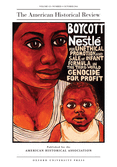-
Views
-
Cite
Cite
S-M Grant, J. Matthew Gallman. Defining Duty in the Civil War: Personal Choice, Popular Culture, and the Union Home Front., The American Historical Review, Volume 121, Issue 4, October 2016, Pages 1283–1284, https://doi.org/10.1093/ahr/121.4.1283
Close - Share Icon Share
Extract
“We all know what the war fever is in our young men,” observed the noted author Oliver Wendell Holmes in The Atlantic Monthly in September of 1861. “Patriotism is the fire of it, no doubt,” he went on, “but this is fed with fuel of all sorts.” And the focus of J. Matthew Gallman’s finely crafted study, Defining Duty in the Civil War: Personal Choice, Popular Culture, and the Union Home Front, is the essence of that fuel: namely, the “printed advice patriotic northerners sought and received during the American Civil War” (1). Gallman opens with Charles Janeway Stillé’s propagandist pamphlet How a Free People Conduct a Long War (1863), but his study is not restricted to a consideration of the output of, among others, the Loyal Publication Society, nor to the printed word alone. Cartoons, patriotic stationary, and sheet music receive their fair share of attention here, and not simply as illustrative accompaniments to Gallman’s central thesis. In many respects, they go to the heart of a study that, as its title suggests, is both deeper and broader than a straightforward analysis of patriotic propaganda.





